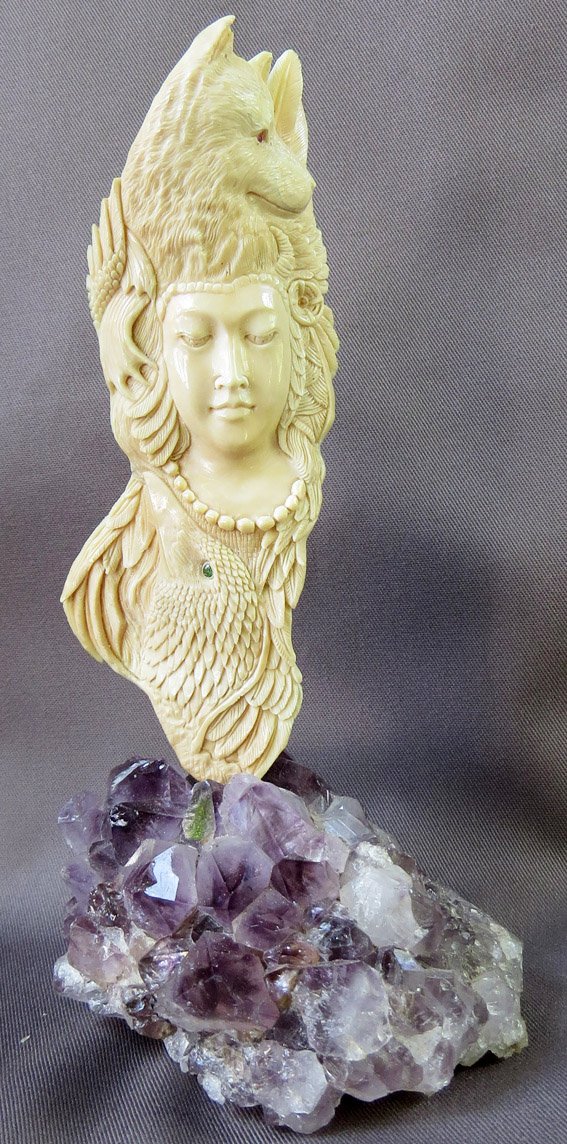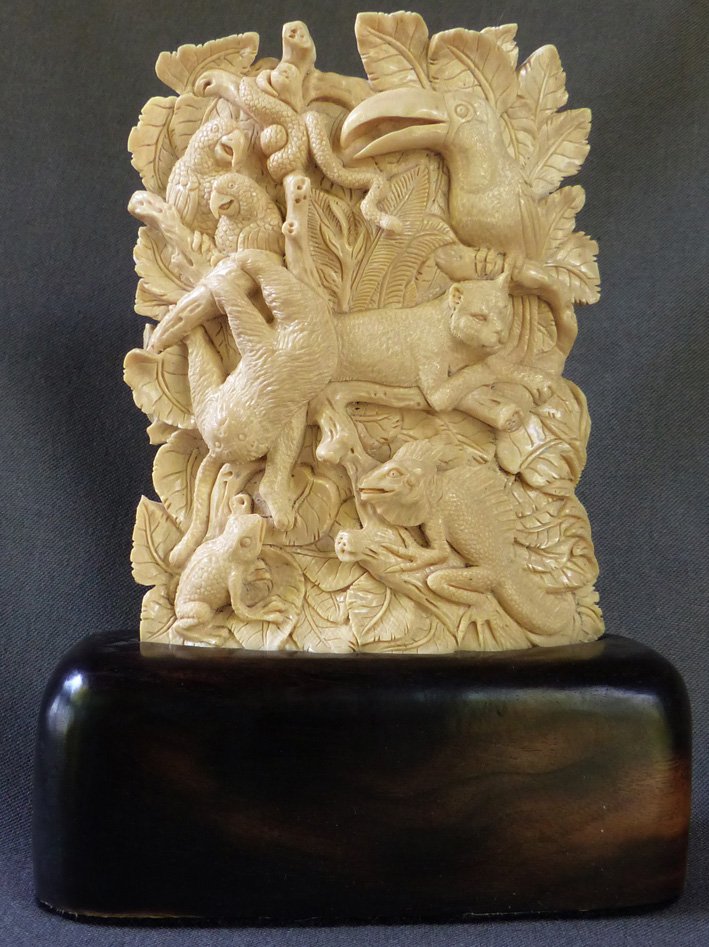
Hand-Carved Fossil Walrus Sculpture Mammoth Tusk Necessity pushed us towards mammoth tusk which is not only more economical but no CITES permit was or is needed. Mammoths mostly died out about 10,000 years ago after roaming the earth for millions of years and evolving into the Woolly Mammoth. A small herd managed to remain on Wrangel Island in the Arctic Ocean and evolved into smaller animals. It makes me chuckle to think of tiny mammoths! Eventually, about 2,000 years ago, they became extinct as well. There are no living mammoths on earth. Our mammoth tusk comes from the permafrost of the Yukon. It is a by-product of gold mining. The miners dig down through layers of permafrost and come across whole mammoth bodies, broken tusks, skulls with tusks, and just the tusks. The tusks sometimes take on the smell of the decaying bodies and it has been a challenge to find the right essential oils to eliminate that smell! No one wants to wear a necklace or earrings with odeur-de-mammoth wafting around! Mammoth tusk, unlike fossil walrus tusk, is hollow inside except at the tip of the tusk. It grows in layers and these can pop apart as the tusk dries. The material must be dry before carving. We have been carving this material for about 25 years and continue to delight in the surprises that unfold as the inner layers are exposed. 
Hand-Carved Mammoth Tusk Sculpture How Do We Know We are Buying Mammoth and Not Elephant Tusk? Susan Tereba – World on a String has only ever worked with ancient-fossilized tusks. We respect the laws and bans on elephant ivory to help preserve these glorious animals. We only work with trusted suppliers who also respect modern-day elephants. It is possible to tell the difference between mammoth ivory and present-day elephant. On a cross-section of both are lines like herringbone called Schreger lines. Both ivories have these but their angles are different. These lines can be seen under a microscope to determine the lines’ angle. Mammoth tusk also picks up colors from minerals in the permafrost after eons of time buried there. Some of these colors can be seen with the aid of a hand-held UV light. They only occur in the mammoth tusk. They are never present in modern-day elephant tusks. In the next Hot Flash, I’ll be writing about another material we use: Bovine Bone